Some bugs are dependent on moisture for survival. Some of these bugs can live in the house if they find sufficient humidity and food.
Some homes offer these conditions naturally. Bathrooms and basements are areas with higher humidity levels known to attract bugs such as silverfish and cockroaches.
Other homes are unwilling to offer these conditions through problems such as water leaks which attract bugs such as termites and yellow ants.
Table of Contents
Bugs That Love Moisture
Some of the most common species of bugs found in homes with high humidity include the following.
1. Silverfish
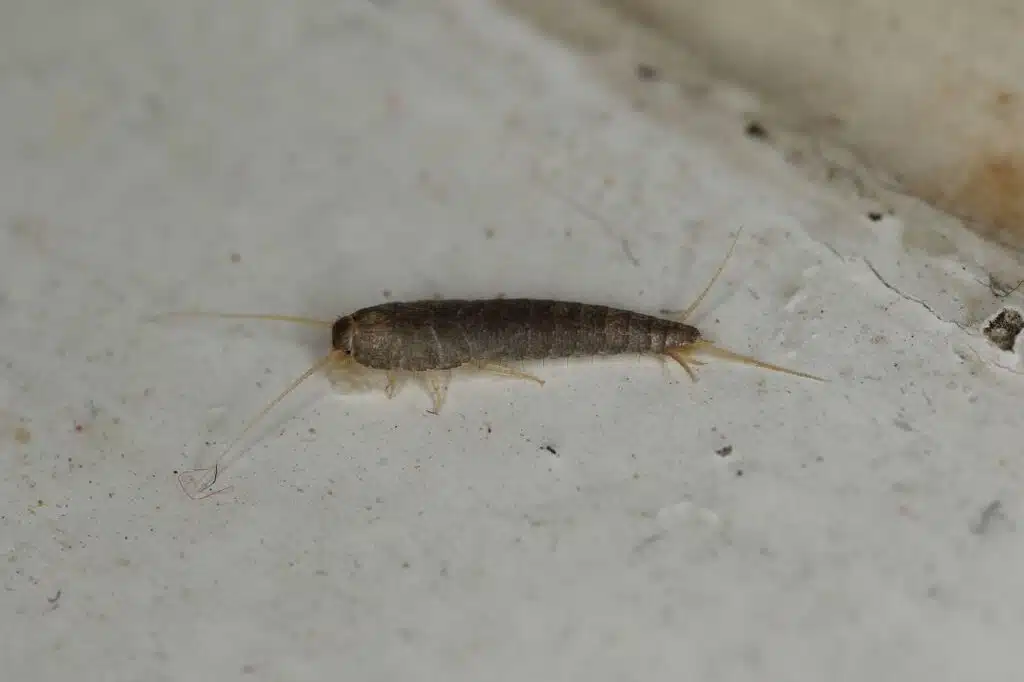
Silverfish are the primary type of moisture bug found indoors. Areas such as the bathroom, the basement, or the space under the sink are known to be its natural habitat.
Apart from loving moisture, this species also feels comfortable in dark places, away from predators.
Identification is based on a gray silvery color and a fish-like shape and movements.
These types of bugs are known to eat all types of cellulose-rich items such as paper, cardboard, and wallpaper.
Items with cellulose that are also infiltrated with water are easy for these bugs to eat.
Silverfish reproduce in varying numbers. A female may last as little as 2 eggs at a time or up to tens of eggs at a time.
You can identify silverfish eggs by their elliptical shape and 1mm size.
Silverfish are small bugs having varying lengths. The size varies from 12 to 19mm.
Habitats with moisture silverfish like
- High humidity areas at room temperature
- High moisture places anywhere around the house, including basements
- Dark and moist places to hide during the day as nocturnal bugs
2. Termites
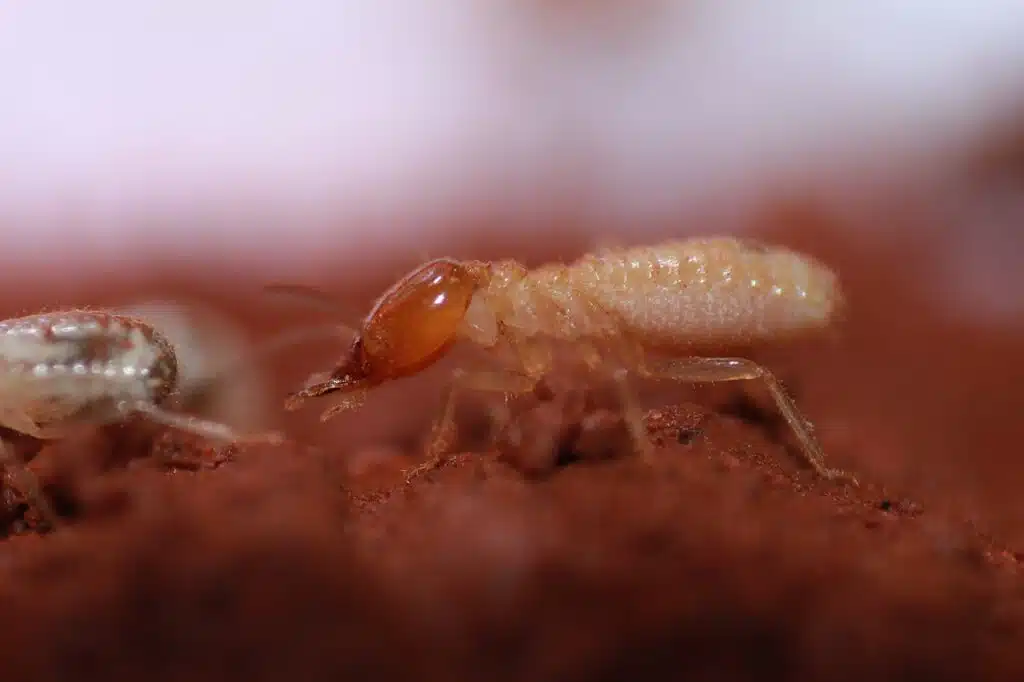
Some types of termites are known for loving humid conditions. Dampwood termites are common in homes with humidity issues. Subterranean termites also need to be in humid conditions.
Your home can be affected by various types of termites that rely on wood. Drywood termites don’t need humidity, but may still affect your home.
Wood that’s been exposed to humidity or direct water contact is more likely to attract damp wood termites.
Dampwood termites normally live in the ground. They are found up to a few feet below the surface where they can move through small tunnels for wood affected by water damage.
A home that’s within the reach of these termites and suffers from water infiltration or humidity attracts termites.
Some homes are affected by humidity without a major water leak. Even small missing caulking around water pipes can slowly lead to damp wood problems that attract termites.
Habitats with moisture termites like
- Western and Southwestern US homes affected by moisture
- Indoor areas with plumbing leaks
- Poor ventilation homes
- Walls, patios, and basements affected by over-spilling gutters
3. Earwigs
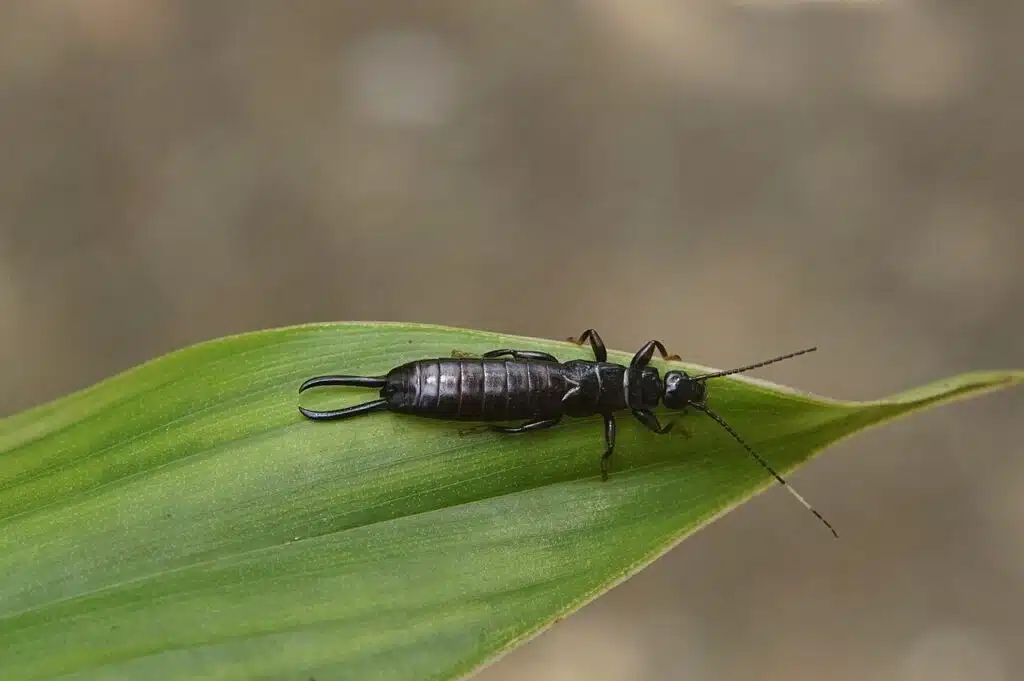
Earwigs are nocturnal bugs dependent on high-moisture hiding spots for the day.
They can hide anywhere around the house, including under plant pots, under furniture, or in the basement.
Earwigs naturally get out of the house whenever humidity sources are dealt with. Some earwigs take advantage of wall cracks and openings to make it back indoors if humidity problems return.
Most earwigs can be found on walls, near faucets, sinks, or in the basement. They tend to run away crawling under furniture or behind walls when surprised by humans.
Earwigs might also make it indoors from high moisture sources located in the vicinity of the house.
Mulch and overwatering plants are known to lead to plenty of soil moisture that attracts earwigs next to the house and possibly indoors.
These types of bugs feed on dead vegetation, both outdoors and indoors.
However, the chances of finding dead vegetation indoors are slim. As a result, these bugs may be seen eating different foods such as leftover food, garbage, or organic buildup around sinks.
Habitats with moisture earwigs like
- Common crawl space such as under the patio
- Humid places under the sink
- Humid basements
4. Mosquitoes
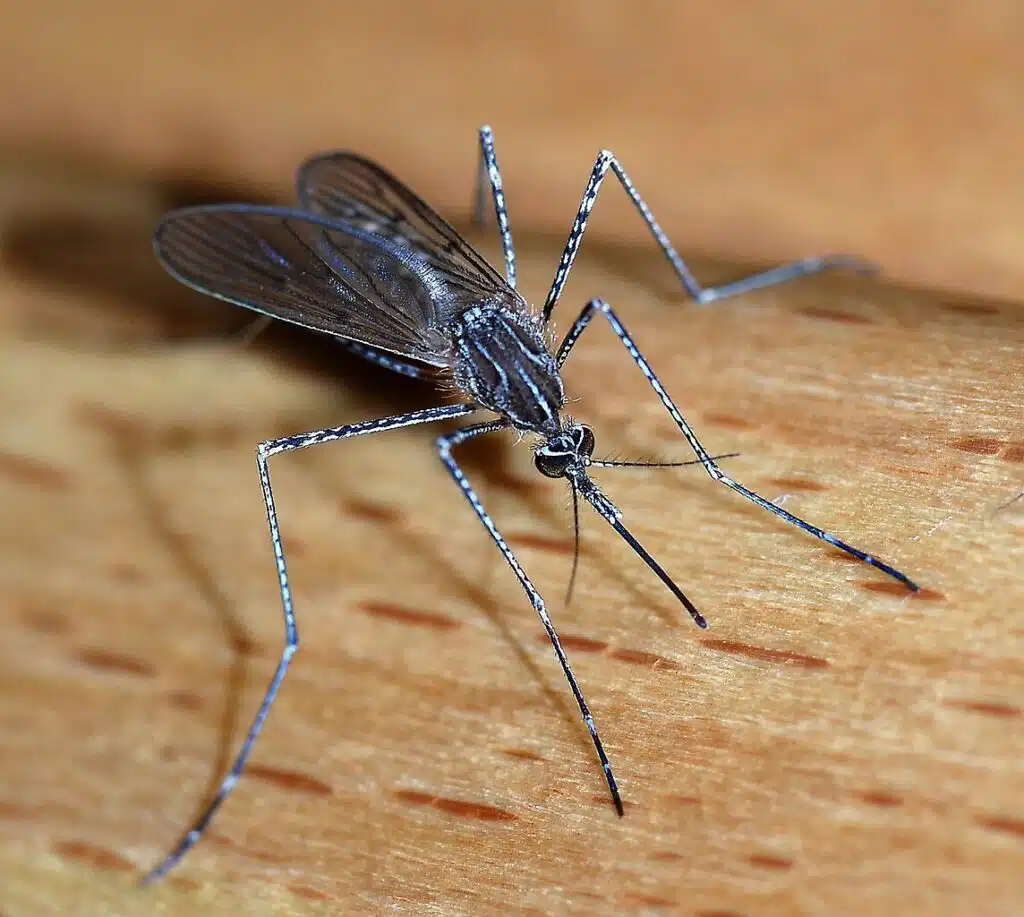
Various types of bugs and flies can move indoors for food or shelter. Mosquitoes thrive indoors as they have hosts to feed on and plenty of moisture around the kitchen or even inside the bathroom.
Mosquitoes can also make it indoors in the evening attracted to light.
A combination of light and open windows or small openings for them to move indoors is typically responsible for a high number of mosquitoes in the house, at night.
Mosquitoes are present in higher numbers in areas with humidity in the form of a water source outdoors.
They can lay eggs directly in water which means puddling water or a dirty pool may be breeding grounds for these biting insects.
Reducing indoor humidity with a dehumidifier can be one of the steps toward a mosquito-free house.
Using air conditioners to lower indoor temperature is known to deter mosquitoes to a certain extent.
These types of biting insects can also be kept at a distance by changing the type of light bulbs you use indoors or on the porch.
Yellow light bulbs are less visible and more suitable for homes without mosquitoes.
Habitats with moisture mosquitoes like
- Under the kitchen or bathroom sink
- On shower walls and in the bathroom
- Behind furniture
5. Springtails
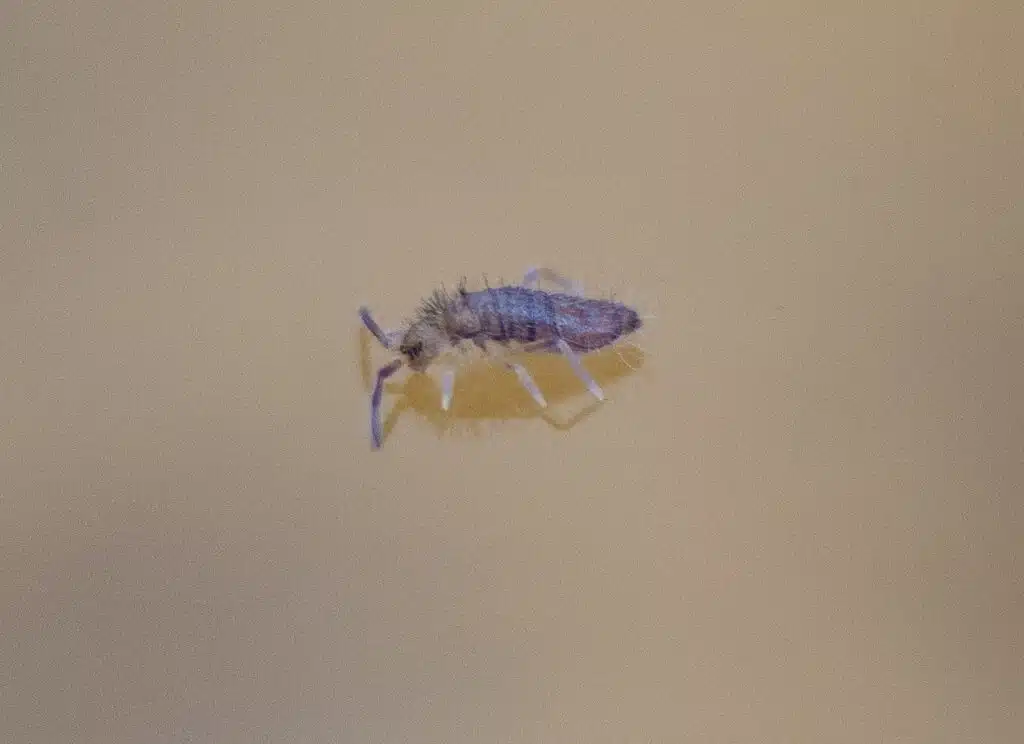
Like silverfish, springtails are only found in the high-moisture area around the house.
They can live under the refrigerator, sink, or under bathtubs.
Most commonly, springtails are found next to leaky pipes as these areas have the highest humidity.
These are some of the smallest humidity-loving bugs you can find around the house.
High humidity attracts these small bugs indoors. Growing to a maximum size of just 1//16th of an inch, these slender and elongated bugs thrive in homes with water leaks.
They can also make it indoors from the area around the house, especially if this area is known to have different types of humidity problems.
A drainage system that leads water from slopes towards the house is bound to create the constant humidity environment springtails, love.
Poor basement ventilation and clogged over-spilling gutters are also known to cause small but sufficient humidity problems that attract springtails indoors.
Habitats with moisture springtails like
- Under the kitchen sink and the refrigerator
- All areas of the bathroom
- Basements and laundry rooms with poor ventilation
6. Spiders
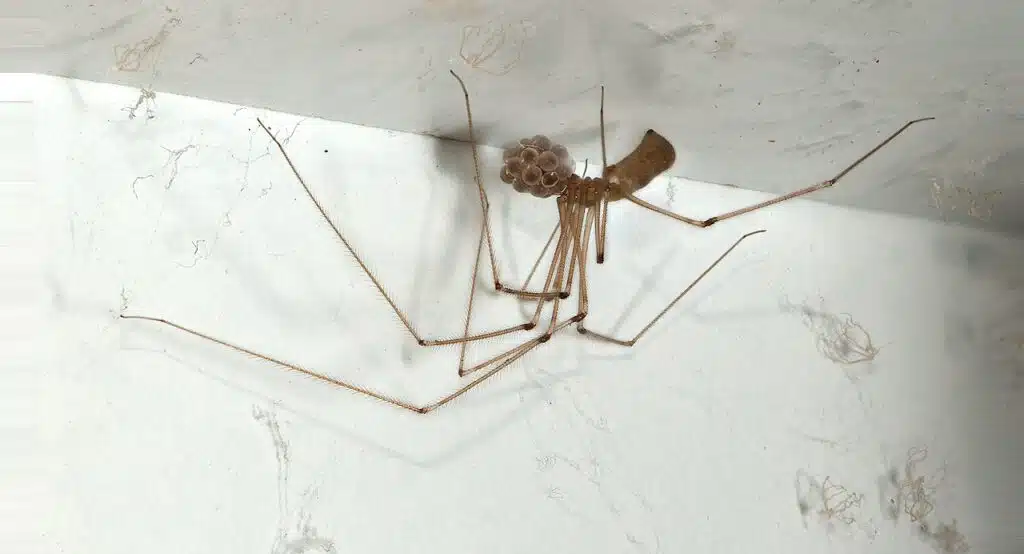
Most spiders don’t need humidity to move indoors, especially if they find insects to feed on.
Cellar spiders are types of spiders that prefer moist areas such as poorly ventilated basements.
You can find these types of spiders even inside the house as they come out from the basement expanding their territory.
Spiders might also be found in moist areas looking for bugs that live in humid spots of the house, not because of humidity itself.
Good at picking up areas with plenty of bugs and insects, spiders can reproduce in high numbers indoors.
Areas that aren’t vacuumed periodically are most likely to house spiders. Added moisture makes these areas good hiding spots for many arachnids.
Not all spiders build spider webs and simply looking for these silk traps isn’t sufficient to spot the hiding places of spiders.
Habitats with moisture spiders like
- Basements and laundry rooms
- Areas behind or under furniture
7. Drain Flies
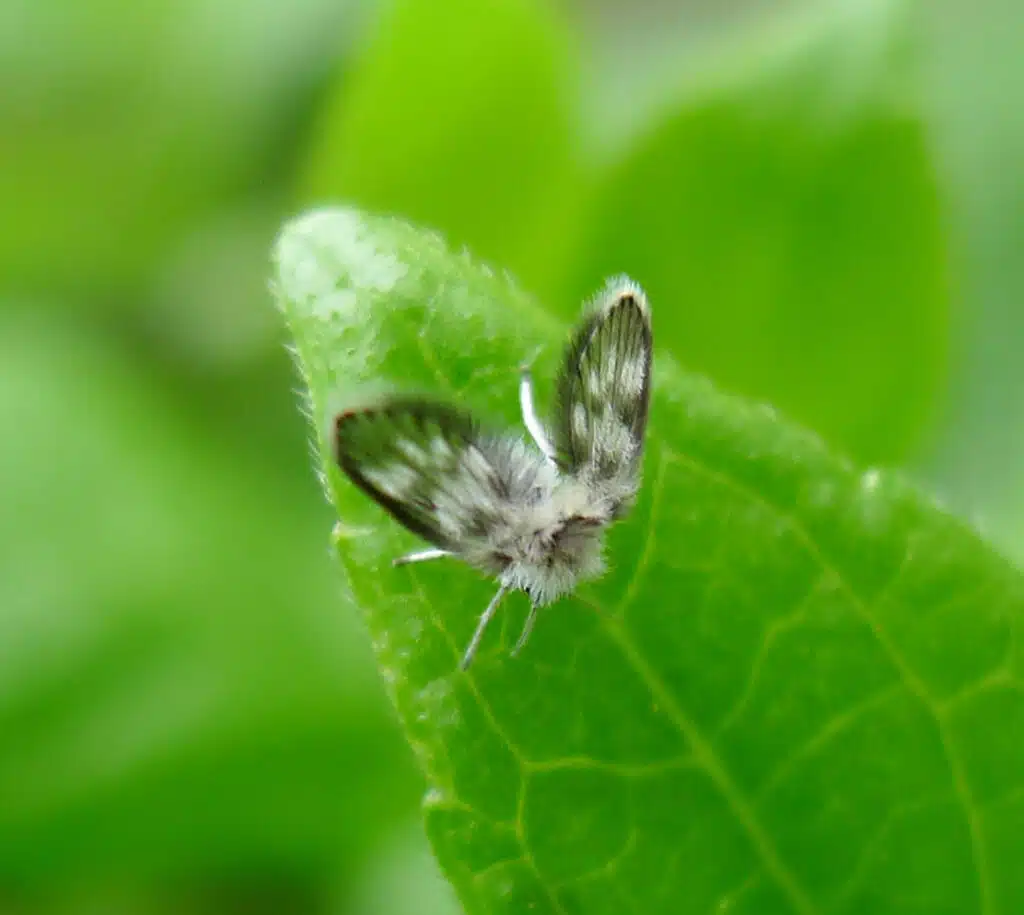
As their name suggests, drain flies live and feed in drains. Organic material buildup from food residue and high humidity in or around drains is what makes these flies a common sight in the house.
Frequent drain cleaning and dealing with clogged drains are the main methods you can eliminate the flies from the house.
One of the common misconceptions about drain flies is that they appear only around the kitchen sink.
These flies are known to like moist areas that aren’t used as often, such as sinks in the basement or the garage as well as stagnant water around shower drains.
Eliminating drain flies isn’t complicated. You need to fix moisture and humidity sources before cleaning their habitat thoroughly to get the flies out.
Habitats with moisture drain fly like
- Sink moisture that causes an organic material buildup
- Shower drain moisture
- Stagnant water from water leaks
- Moist areas with leftover food that leads to bacteria growth
8. Cockroaches
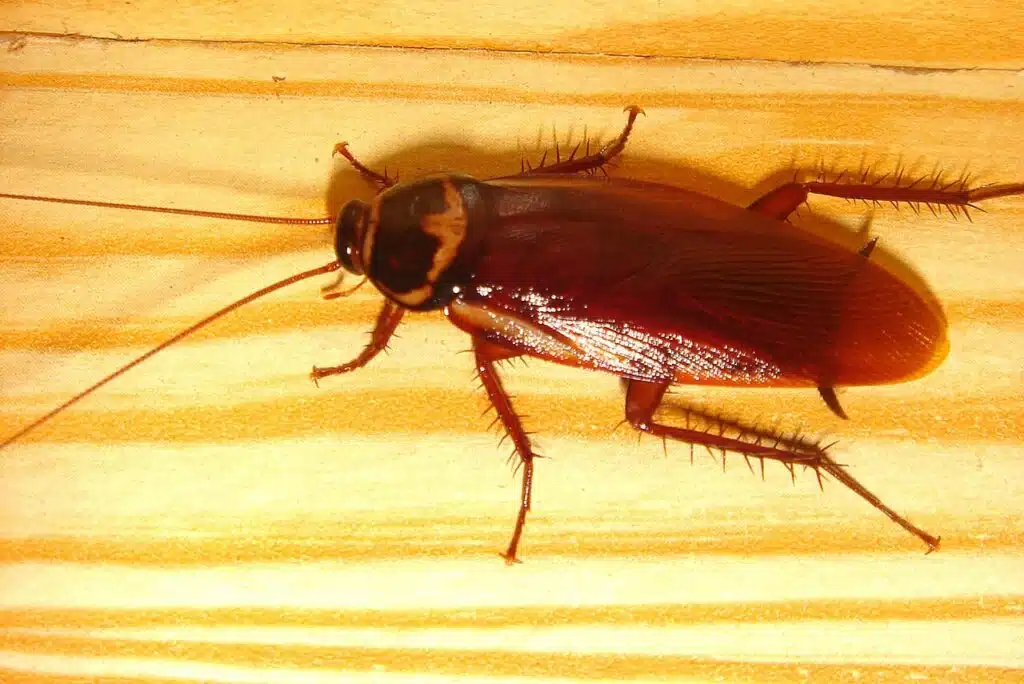
Food, water, and shelter are among the top priorities of cockroaches and the reasons why they make it indoors.
Always looking for food, cockroaches need humidity to survive.
They may it indoors from the garden or nearby homes or apartments infested with cockroaches.
Outdoor humidity sources attract roaches and allow them to multiply in high numbers. These places then provide the starting point for indoor roach invasions.
Large flower pots you frequently water are among the first places to host cockroaches. Dirty or clogged gutters also attract roaches.
Cockroaches also thrive under mulch or around trash cans.
They move indoors taking advantage of cracks or openings which allow them to crawl inside. Cockroaches can also make it indoors through basements.
Damp basements with open windows attract many roaches which can then spread throughout the house.
Organic materials provide food and are another good reason for roaches to move indoors.
Habitats with moisture cockroaches like
- Spaces under sinks with water leaks
- Areas behind the refrigerator
- Damp basements
- Dirty gutters around the house
- High moisture areas in the garden (mulch, bird baths, or uneven terrain with puddling water)
9. Ants
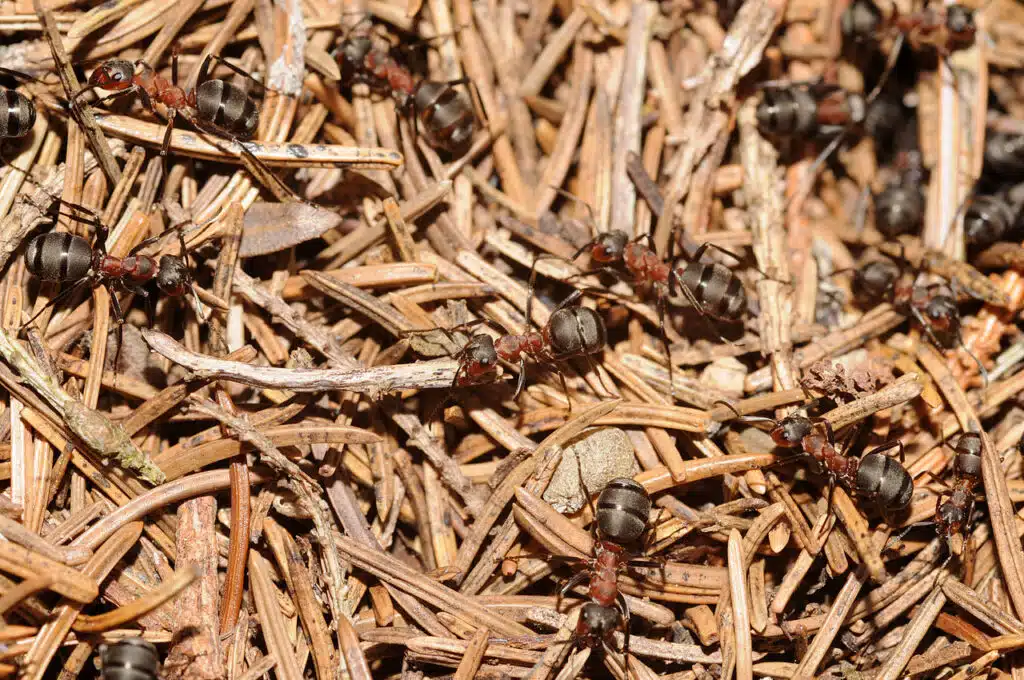
Not all ants are found in areas of the home with high moisture. Certain yellow ants also known as Citronella ants are dependent on high humidity, the other hand.
These types of ants may initially be confused with termites as they can nest in damp wood, in the house.
Ants of this type love high humidity and they make their way from their large ant mounds indoors whenever a new humid place good for nesting arises.
Ants that nest in the house in damp wood are a sign a home has water leaks and needs fixing.
Ants themselves don’t eat damp wood as they often prefer plant roots. Many of these ants aren’t easily seen in broad daylight as they live underground.
Habitats with moisture ants like
- Damp wood affected by termites
- Constantly humid soil under slabs, patios, and driveways
- Damp basements
10. Dust Mites
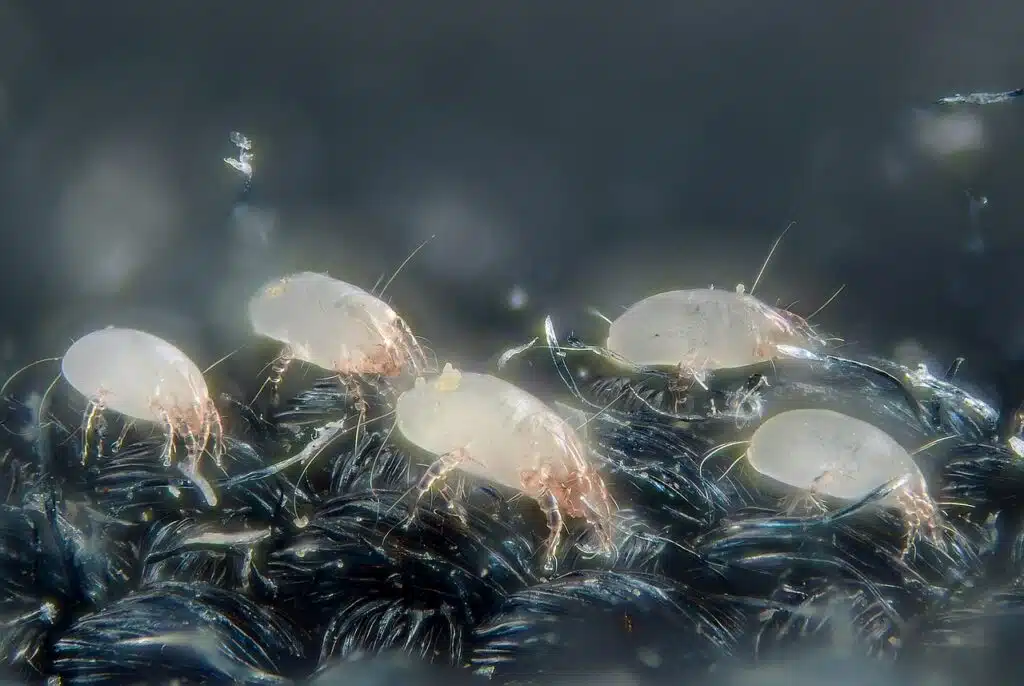
Dust mites are common in all homes. Their numbers can get higher when humidity meets warmth.
Room temperature is fine for dust mites but they can thrive in higher temperatures. They also need excess humidity to reproduce.
A humidity of at least 70% is ideal for dust mites to reproduce in very high numbers.
Dander and flakes of skin are among the preferred foods of dust mites. Skin flakes are common all around the house.
They’re particularly common on beds, sofas, and armchairs.
A high number of dust mites reproduced in a high moisture environment with plenty of skin flakes to feed on can lead to certain health conditions.
Coughing and sneezing are among the first reactions to having too many dust mites in the house.
Washing bed sheets, clothes, and deep cleaning upholstery are recommended measures to eliminate dust mites, together with reducing indoor humidity levels.
Habitats with moisture dust mites like
- Bedrooms and bed sheets
- All other rooms with 70-80% relative air humidity
- Warm humid rooms with temperatures of at least 68-70 degrees Fahrenheit
11. Booklice
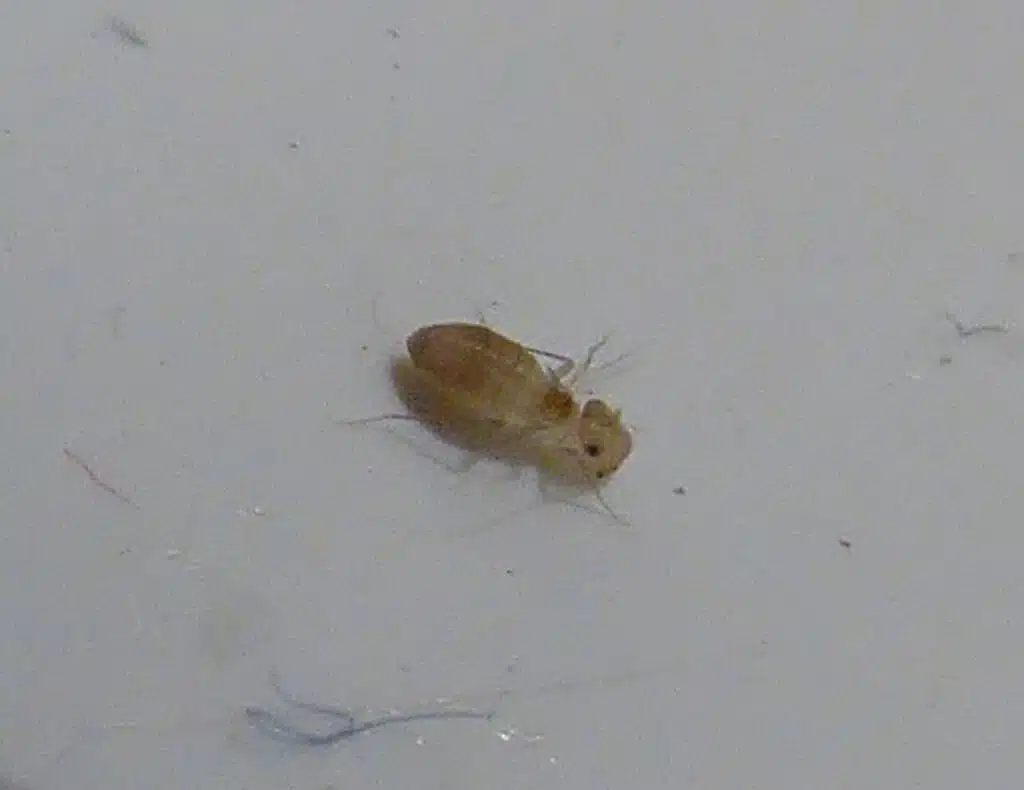
Very similar to dust mites in temperature and humidity preferences, booklice can be found in almost any home with high humidity.
The minimum level of humidity for booklice preferences is 75%. They survive relative humidity of over 90%.
Unlike dust mites that may feed on skin flakes, booklice feed on mold.
The presence of mold is in direct correlation with the presence of high humidity.
Mold appears in homes with poor ventilation or homes that suffer from water infiltration or water leaks.
Controlling booklice involves controlling humidity levels and dealing with all possible sources of humidity. In time, this leads to a diminishing number of booklice.
Mold also needs to be manually removed from homes to eliminate all health hazards and all booklice.
Types of habitats booklice love
- Humid areas of the house with mold
- High-humidity rooms with books, newspapers, and magazines to feed on cellulose
- Pantries with plenty of flour and other dry foods
12. Fungus Gnats
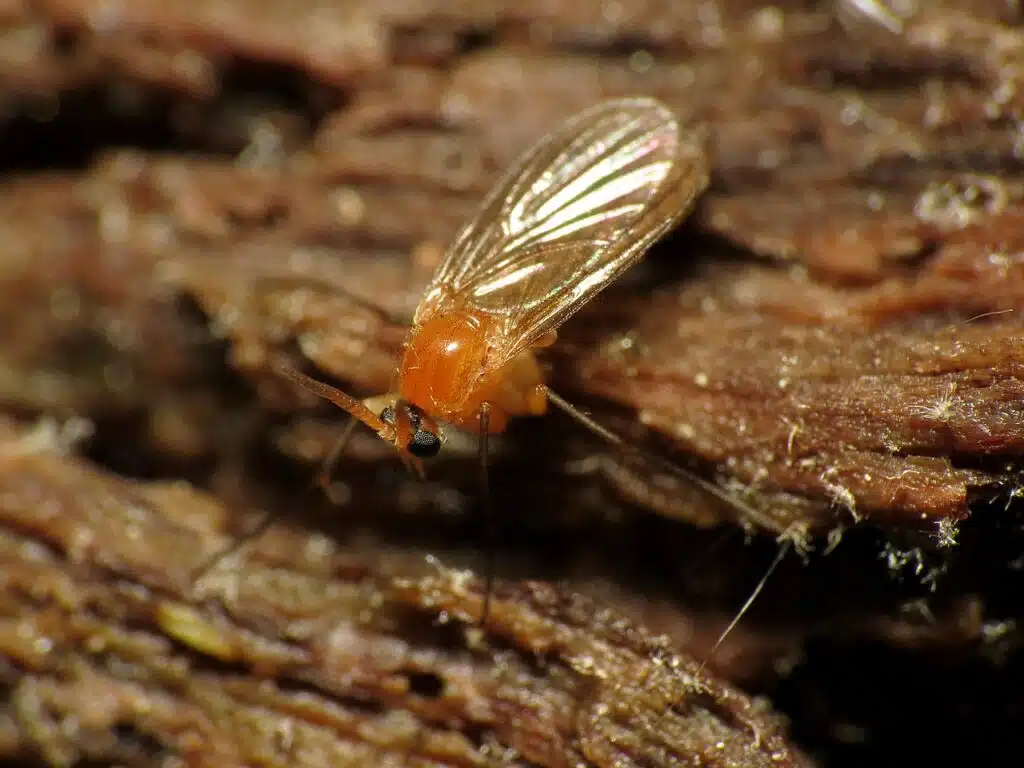
Most homes with fungus gnats are high humidity and plants for these insects to feed on. Potted plants are the perfect food source for these gnats.
Similar to mosquitoes, these gnats need the moist soil of plants to lay eggs on.
Indoor plants that are frequently watered provide the moist soil these flies need to reproduce. The fungus also grows on overly-watered potted plants, serving as food.
These types of flies aren’t true pests, as they stick to potted plants. Their annoying presence might take weeks to clear.
Up to 200 eggs are laid by a single fungus gnat. Emerging nymphs feed on organic material in the potted plant or on the plant itself.
It takes up to 2 weeks for an egg to complete its cycle and turn into an adult fly.
Humid habitats fungus gnats like
- Humid soils of potted plants
- Trash cans
- Drains with organic buildup
13. Mold Mites
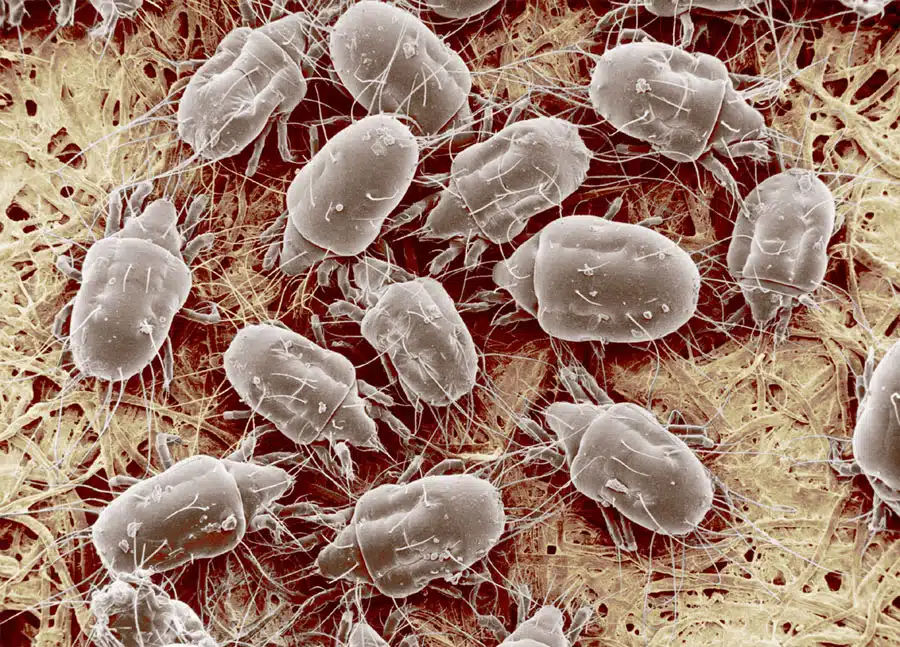
As their name implies, mold mites grow and feed on mold. They are sometimes associated with skin reactions and respiratory problems.
Most of these problems are caused by the mold itself, as mold mites are tiny and they don’t bite.
Homes suffering from mold are exposed to the appearance of these mites.
Both visible and barely visible emerging mold houses these mites.
Some mold mites are present in remote areas of the house where you might not suspect mold is even a problem.
Common water leaks and poor indoor ventilation are reasons for mold formation, which needs to be eliminated to get rid of mold mites.
Mold can also grow on clothes and in closets if your home has high humidity.
As a result, mild mites can be present on multiple surfaces, including clothes.
Less common areas for mold mites include basements and areas behind furniture, which naturally get poor air circulation.
Humid habits where mold mites thrive
- Corners of rooms with high humidity
- Areas behind furniture
- Old homes with poor ventilation
- Areas of the house with water infiltration
14. Pillbugs
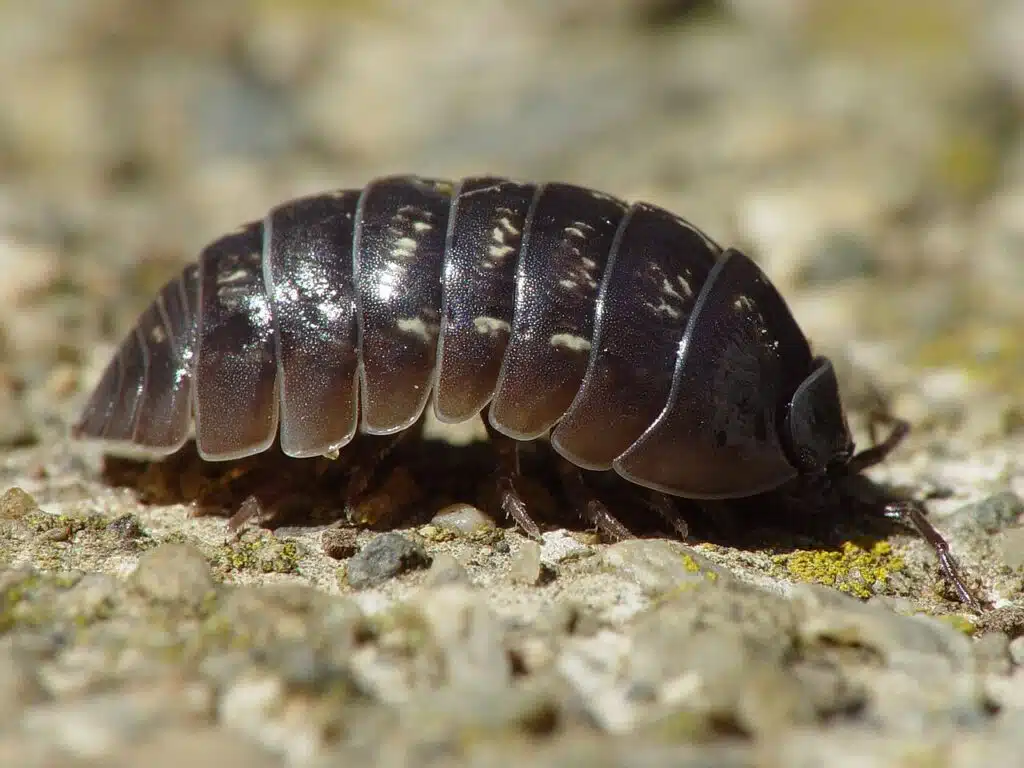
Pillbugs are some of the bugs likely to not survive inside the house due to a lack of decaying organic matter.
These bugs may still enter homes, particularly basements as they love moisture.
Pillbugs are nocturnal and their movements aren’t easily spotted. They prefer to hide in dark moist areas during the day.
These types of bugs live outdoors in the ground or in areas with decaying organic matter such as old leaf piles.
Dependent on high humidity, these bugs may move into basements at night.
They die within days if they don’t find their way out, in most cases.
You can find these bugs under crawl spaces, patios, slabs, and under rocks or logs outdoors.
Removing decaying organic matter from around the house is the best approach to reducing the risk of having them inside the house.
Habitats where pillbugs are found indoors
- Basements with high humidity
- Crawl spaces under patios and stairs
15. Centipedes
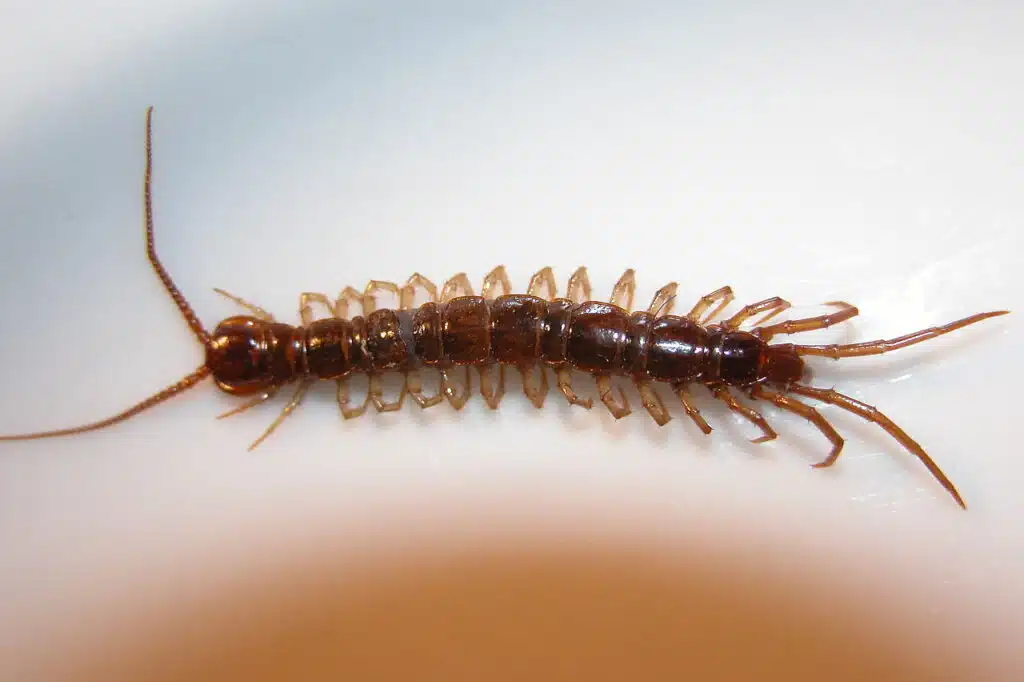
High indoor humidity is the primary cause of centipedes indoors. These bugs with many legs prefer moist areas of the home.
They can be found in common spaces with water leaks such as the space under the sink.
Centipedes prefer dark humid places so basements on basement sinks are their primary area around the house.
Unable to survive without moisture, centipedes move along seeking another area of the house, moving outdoors, or dying whenever you resolve moisture problems.
Growing to a size of up to 1.5 inches, house centipedes can be spotted in certain areas when they come out during the day.
If you can’t find them, you need to look for remote dark places where you can vacuum them for quick manual removal.
Habitats with centipedes inside the house
- Bathrooms drain
- Inside closets and cupboards in high-humidity rooms
- Spaces under sinks with water leaks
16. Millipedes
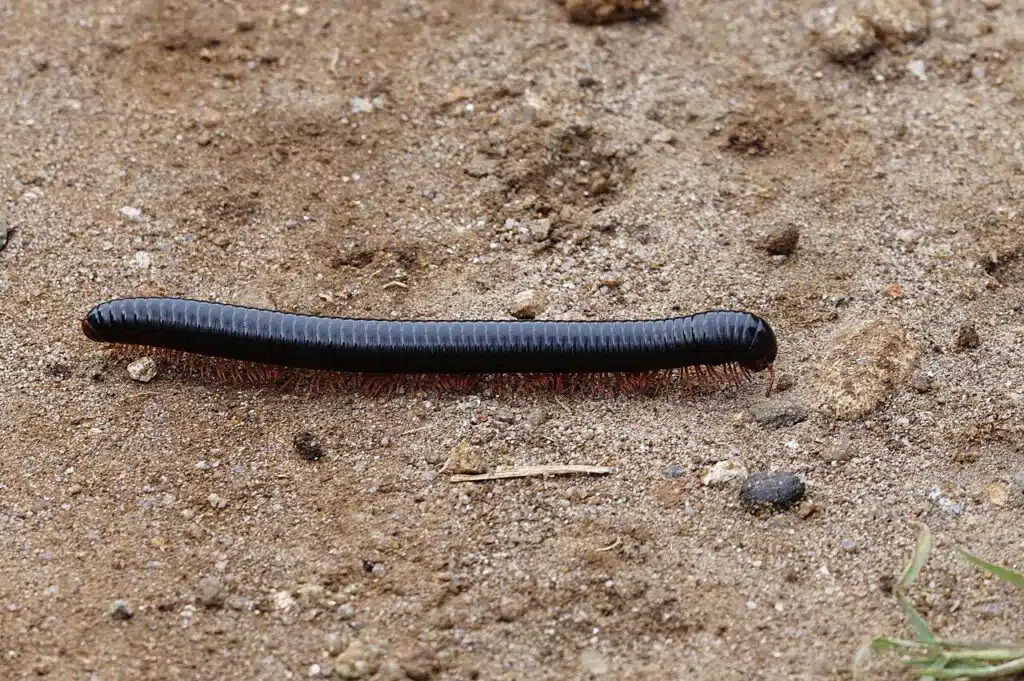
Millipedes love moisture and need high humidity to survive. They feed on decaying organic matter and are common among flowers and in the garden.
The end of the summer marks a migration period for millipedes which might be looking to get indoors and escape the colder days outside.
Millipedes can make it indoors where they can’t survive more than a few days. They favor high-humidity areas such as basements or air vents.
You can cover all air vents with protective mesh screens to keep them out.
Checking all wall cracks is also important, especially towards the end of the summer.
At the same time, it’s important to remove mulch from the garden where possible or to only use a thin layer of much to allow better soil ventilation.
Habitats with millipedes in the house
- Basements and bathrooms
- Air vents
17. Crickets
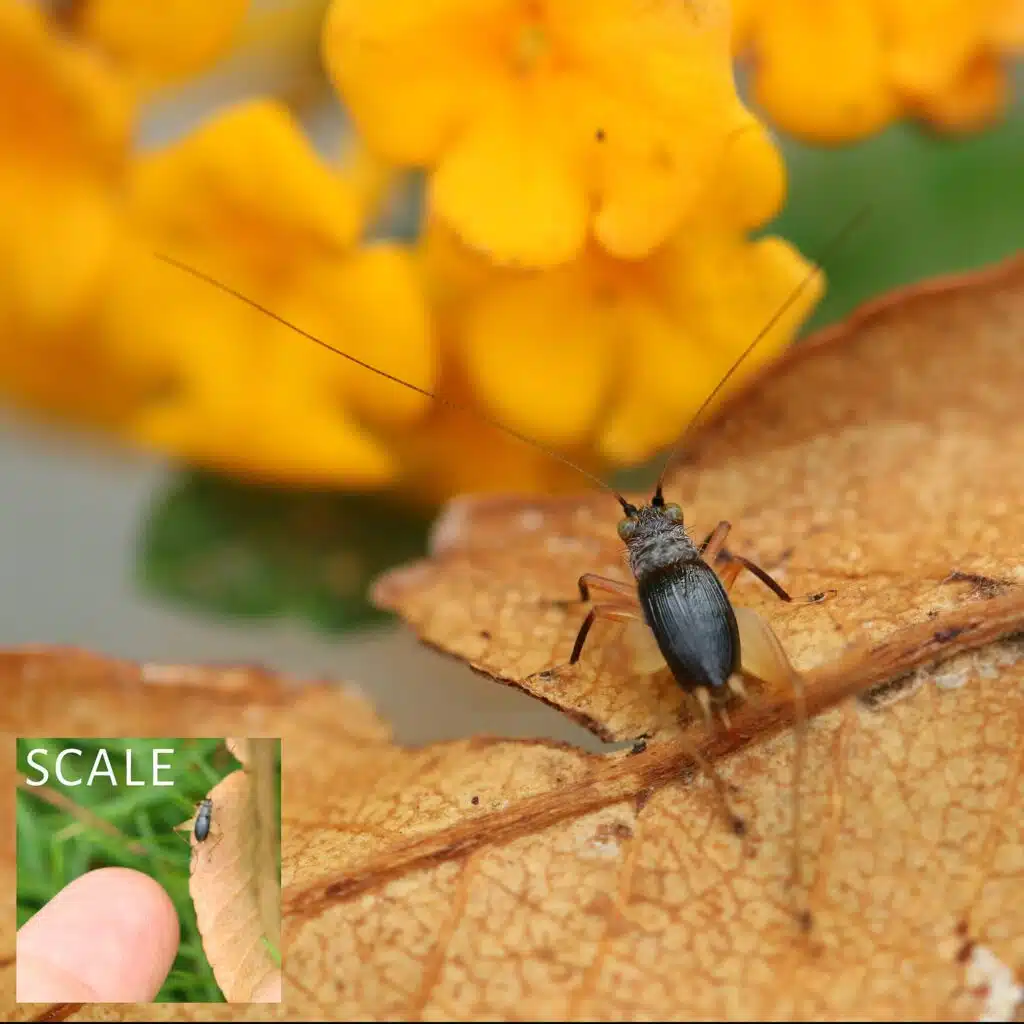
Moisture is a key element attracting crickets indoors. You can limit the access of these large bugs in the house by controlling humidity.
Apart from humidity, crickets also love warmth inside the house.
Crickets aren’t true pests as they don’t bite or spread viruses. They’re still unpleasant around the house and controlling humidity is a must when it comes to keeping them out.
Certain periods of the year are known for favoring cricket home invasions.
They can be trying to escape rainy days by moving inside houses, garages, and sheds.
Crickets may survive longer indoors whenever they find all types of insects to feed on. They like to eat insect larvae, but they can also be herbivorous surviving on grass alone around the house.
Habitats with crickets in the house
- Basements with lights that attract the bugs
- Warm and humid kitchen corners
18. Scorpions
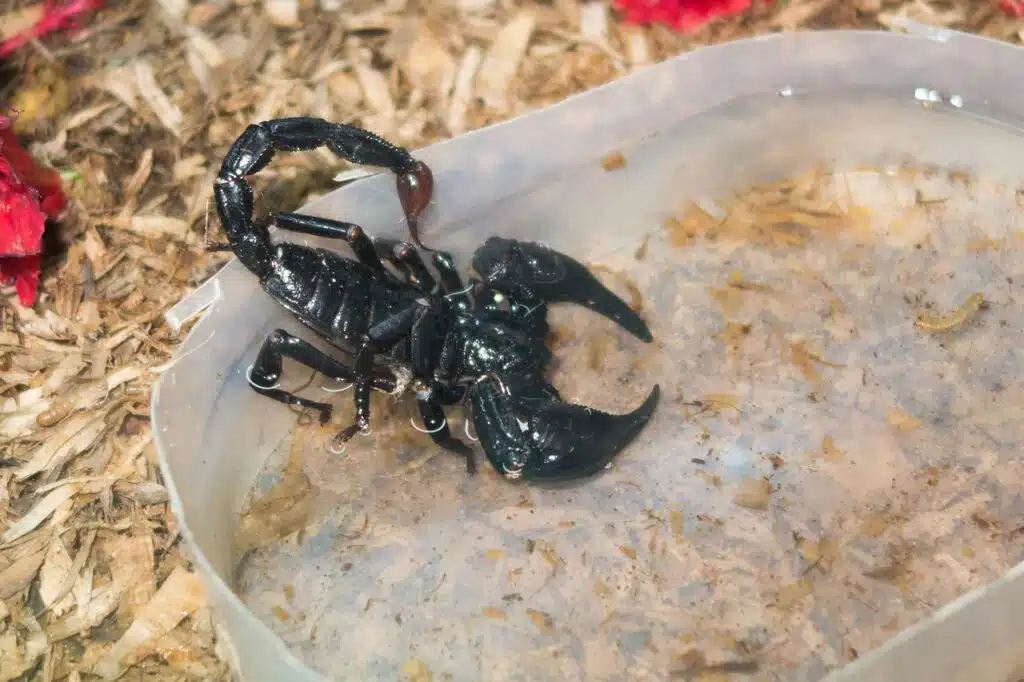
Scorpions are sometimes known for loving high indoor humidity.
Many scorpions are nocturnal and may end up in the house attracted to light, at night. Warmth and moisture might keep them indoors longer.
Scorpions may also stay indoors if they find insects and spiders to feed on as well.
Emperor scorpions are particularly known for loving humidity.
These types of scorpions love at least 75% humidity, which is one of the reasons they are kept as pets in containers with controlled humidity levels.
Almost all types of scorpions end up in homes by accident.
They prefer to be outdoors, hiding under logs or rocks, particularly during the day.
Habitats for scorpions around the house
- Patios and entryways
- Windows and other light sources
- Damp basements with plenty of insects
19. Pseudoscorpions
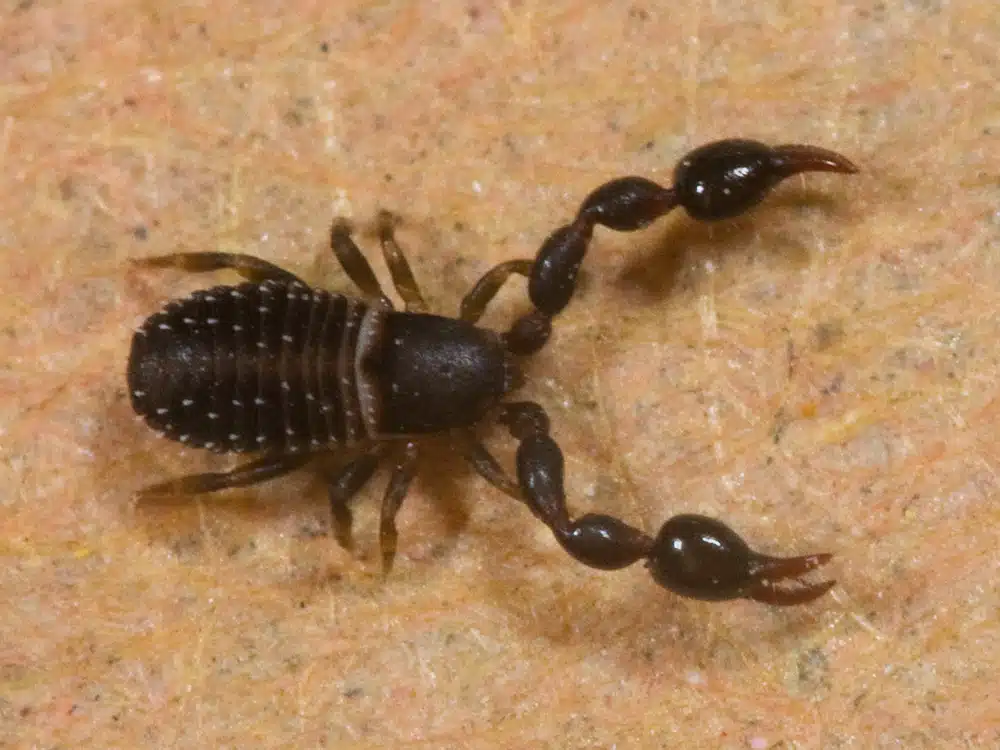
Pseudoscoprions look very similar to scorpions. They are a type of arachnid with a size of at least 1 inch that loves humidity.
Most pseudoscorpions leave outdoors in leaf litter, in the garden, or next to man-made structures such as barns and sheds.
They look for certain types of insects and bugs to eat such as springtails, ants, and small spiders.
While possibly beneficial through their diet, pseudoscorpions should be kept away from the house by controlling entryways and humidity levels.
Bathrooms and basements are typical high-humidity areas where the insects these arachnids feed on might live.
Laundry rooms might also be known hiding spots for pseudoscorpions.
Habitats for pseudoscorpions in the house
- Basements with high humidity and other insects
- Laundry rooms that attract ants and flies
20. Bed Bugs
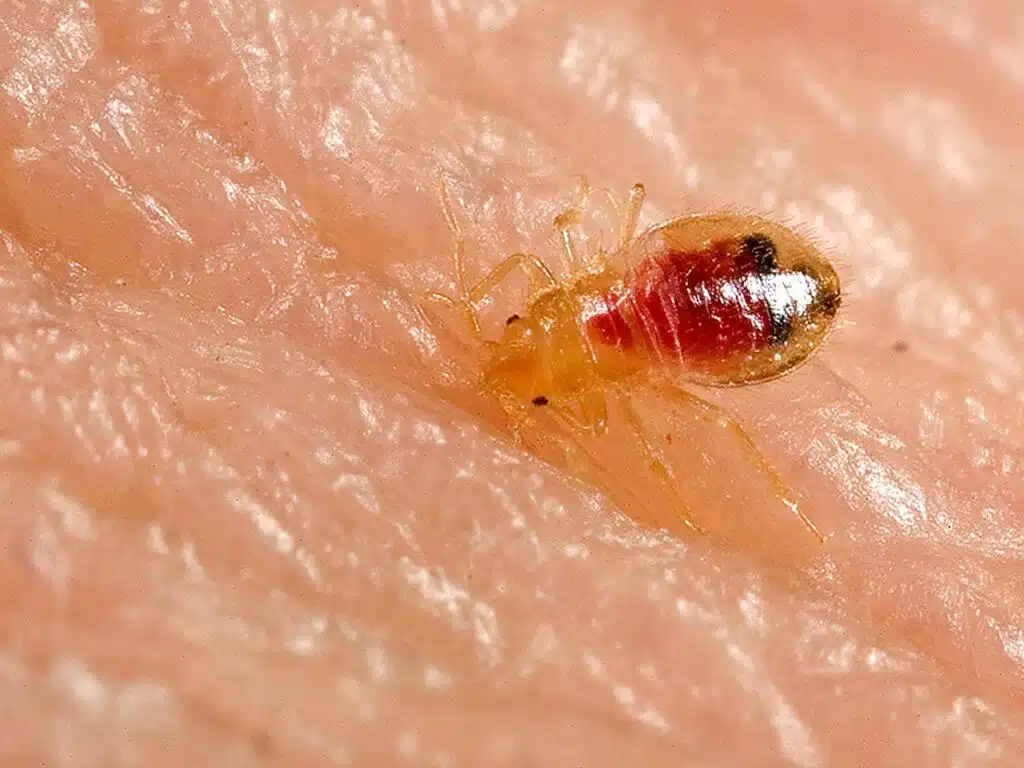
Bed bugs also love humidity. They thrive in humidity levels just above the normal standards in the house.
You can find bed bugs thrive at a humidity above 55%.
These types of bugs are found across multiple types of homes, relative to humidity indoors as they live on beds.
Excessive heat has been found to kill bed bugs through dehydration.
Reducing humidity levels to normal standards with a dehumidifier can be one of the methods to control bed bugs, apart from cleaning out the area where they have been spotted.
Habitats with bed bugs in the house
- Beds and bed sheets
- Closets, bathrooms, and dressing rooms
21. Stink Bugs
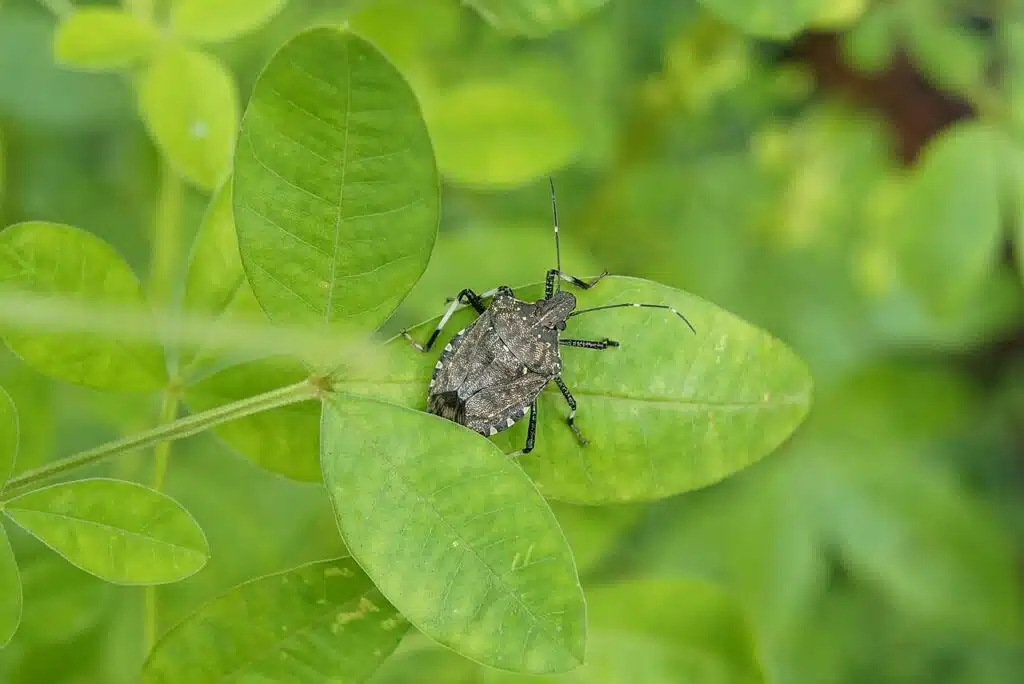
Stink bugs are known for their distinct shape and for their capacity to release a bad smell whenever roughly handled.
The repulsive scent of these bugs can be avoided by reducing the conditions they love so much, which are warm humid conditions.
Making it indoors attracted to lights or by a carrier such as plants, bags, or gardening tools, stink bugs don’t tend to live indoors long.
They might be looking for a way out if the weather outside is good.
Stink bugs might also be moving indoors on cold days as a means to find a warm humid place to live.
Habitats where stink bugs are found indoors.
- Bathrooms and kitchen spaces
- Attics and laundry rooms
22. Slugs
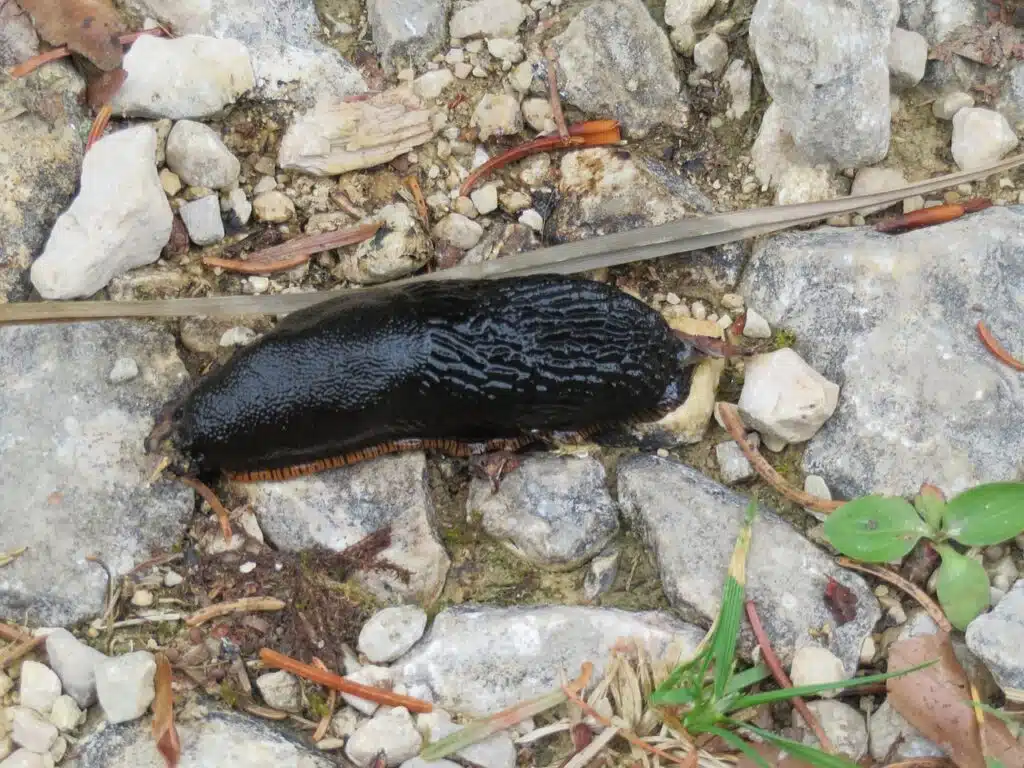
Slugs are almost exclusively found in humid spaces around the house. They need high humidity levels to survive and might only be interested in basements.
Slugs can also live under patios, easily making their way indoors for plants to feed on or as a means to escape bad weather.
Slugs might not be interested to move in dry basements.
Basements with a humidity level of 55% or lower are known not to attract slugs as those with higher humidity of 65-70%.
Habitats around the house with slugs
- Basements with high humidity
- Laundry rooms
- Patios and crawl spaces
23. Fleas
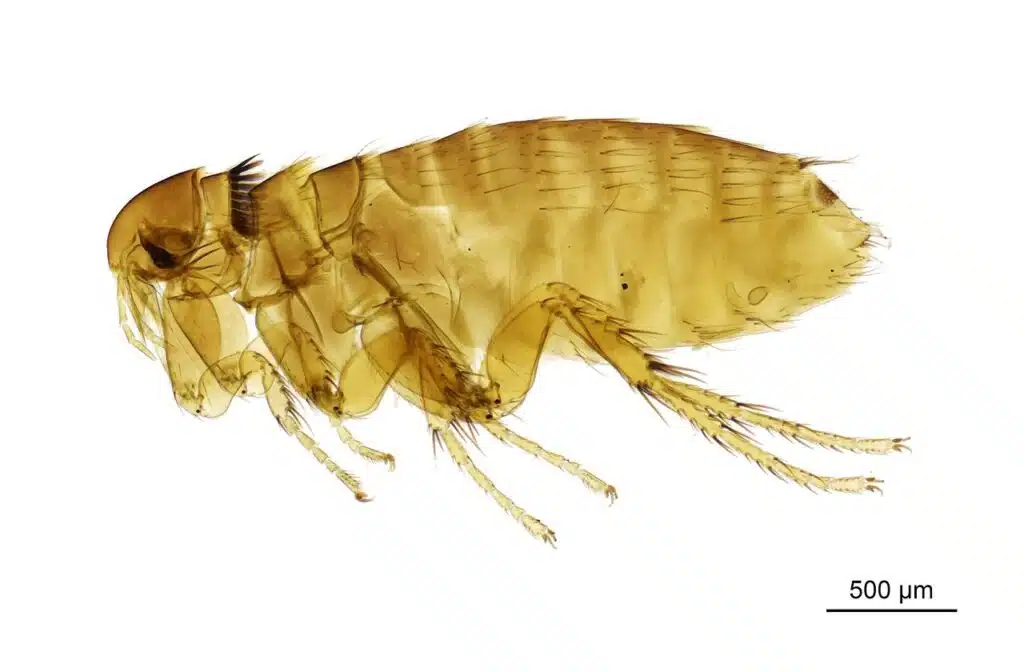
Fleas also need high humidity levels to survive. While they don’t need as much humidity as slugs, they still need at least 50% humidity levels to thrive.
You can control fleas in a room by reducing air humidity and temperature.
Pets tend to bring fleas inside the house so it’s best to check humidity levels in the area’s pets live around the house as well.
Habitats with fleas in the house
- Sleeping rugs of cats and dogs
- Basements where fleas can make it on other bugs and insects
How to Prevent Moisture Bugs In Your House
Moisture bugs move indoors from the immediate vicinity of the house. Dealing with both indoor and outdoor water sources is crucial.
Check for water leaks
Water leaks are responsible for a high number of bugs in the house. They can happen in almost any area of the home, particularly in the kitchen, bathroom, or laundry room.
Water leaks attract bugs that love moisture. Even small water leaks raise indoor humidity levels which makes bugs feel right at home.
Water leaks and food lead to faster decaying organic matter which is also a breeding ground for certain flies and other bugs.
Use dehumidifiers
Dehumidifiers control excessive humidity levels in the house. You can use dehumidifiers to keep an eye on indoor humidity levels in key areas known to attract bugs, especially old basements.
Rooms with plenty of clutter such as attics or basements are known to suffer from poor ventilation and may benefit from a humidifier more.
Regularly clean gutters
Centipedes, millipedes, and other bugs thrive in high-humidity conditions. Clogged gutters create water infiltration problems next to the house which attracts these bugs.
Pillbugs and other types of bugs can live in clogged gutters and feed on the decaying leaves found inside the gutters. Cleaning them regularly is recommended.
Check for infiltration problems
Water infiltration can also have other sources apart from clogged gutters. Poor soil drainage and even puddling water from overwatering vegetables in the garden are all sources of excessive water.
Continuous moisture bug problems in the house even when the yard is clean may be caused by the infiltration in the ground caused by natural waterways on slopes or water coming in from a neighboring house.
Summary
All types of bugs may survive and even thrive indoors with sufficient humidity.
Mold mites are among the species that only become a problem with excessive humidity that triggers mold formation in the house.
Other species such as cockroaches need humidity to avoid dehydration and to find a place of decaying organic material to feed on.
Moisture bugs may be prevented by controlling both humidity levels and foods such as leftovers, organic material buildup, and other insects that may attract predatory bugs.
You can also keep these bugs out by installing window and door screens as many bugs move indoors at the end of the summer.